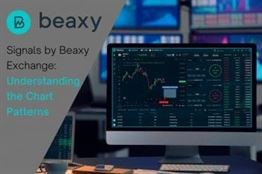Content
This new type of money is what makes up the non-M0 components in the M1-M3 statistics. However, for most of history, almost all money was commodity money, such as gold and silver coins. The advent of cryptocurrencies has spurred a debate about the future of fiat currencies and whether they’ll ultimately give way to digital coins. Cryptocurrencies such as Bitcoin aren’t fiat money because they aren’t issued, controlled, or backed by any central authority. And in some cases, the total maximum supply is designed to be capped at a certain amount. You’ve probably heard the expression, “Backed by the full faith and credit of the US government,” in reference to the dollar. It gets its value based on the trust people place in the authorities that issue it.
- A positive gap will exist only if the production of the tokens is brought under State control and limited in quantity.
- Money is, of course, that medium of exchange, and throughout our history there have been many different forms of money.
- If the commodity cannot retain its intrinsic value, then the trust in it won’t last.
Back in the day of the gold reserve, they printed money out of a valuable physical commodity such as gold, silver, or paper money they could redeem for a set amount of the gold or silver. Fiat money gives central banks more control over the amount and frequency of credit extensions because the control of fiat money allows the banks to “print” more money. The bottom line is commodity money functions by establishing a value backed by a physical product that everyone assumes has a value, such as gold, silver, or tobacco. And when using commodity money for purchasing items, it becomes the money or currency accepted by all. Backing a fiat currency with a commodity provides more stability and encourages confidence in the financial system. Anyone could take backed fiat currency to the issuing government and exchange it for a certain amount of the commodity. Another way that commodity money sees inflation is through the debasement of the currency.
Unlike Commodity Money, Fiat money has no intrinsic value
Because money is standardized into specific values, it can be used to price goods and services, and allows the easy comparison of prices. Because the value of money is determined by general agreement, the condition of the money is irrelevant to its value. When money is offered, only the amount matters, not its condition. Adding to this, there is greater opportunity for bubbles with fiat currency – an economic cycle in which there is a rapid increase in price before an equally rapid decline in price. For example, during World War II, prisoners were using cigarettes https://www.beaxy.com/market/icx/ as commodity money, and they were exchanging them for other goods and services. A cigarette’s value was attached to a certain portion of bread. Even those who didn’t smoke were using cigarettes as a means to conduct trade. In contrast to a currency backed by gold, which has inherent value due to the need for gold in jewelry and ornamentation, fiat money can decline in value and can even become worthless. “We don’t have a currency of our own,” proclaimed Nerchivan Barzani, the Kurdish regional government’s prime minister in a news interview in 2003.
![]()
The commodity itself constitutes the money, and the money is the commodity. Second, opponents of fiat money claim that the ability for a government to print money without having to back it up with a specific commodity is potentially dangerous. International balances were settled in dollars, which were convertible to gold at a fixed exchange rate. The gold standard was in place until 1971, when US President Richard Nixon, faced with surging inflation and high unemployment, ended it as the amount of foreign-held dollars exceeded the amount of gold in the US reserves. In addition, the price of fiat money depends on government regulations and fiscal policy, which could result in a bubble with a rapid increase and decline in prices. Another factor that may cause a sharp decline in prices is the proliferation of other cryptocurrencies. Many people will either buy the much cheaper cryptocurrencies or sell Bitcoin to buy those currencies, hoping that cheaper cryptocurrencies will increase in price faster than Bitcoin. Being able to create and destroy money is required to stabilize the value of that money, because supply and demand for money continually fluctuates. On the other hand, the creation and destruction must be done by a central authority that is not exposed to the whims of politicians or where such influence is limited. Moreover, if money cannot be created, then a deflationary spiral will occur as the economy grows and requires more money to operate.
Representative Money
There are some specific places where we can find commodity money for selling and purchasing. The government does not issue the commodity money, but it is one of the wealth of the country’s economy. Which statement accurately describes the relationship between commodity money and fiat money? Commodity money has value in itself while fiat money has value only because it is given value.
If you follow that logic, nothing has any value other than ‘as we perceive it’ and once again you have fallen into the trap of not understanding the difference between commodity money and fiat money.
This is not difficult to understand – one is a store value, the other is not.
— Matt 🇬🇧🇵🇱🇺🇸🇨🇩 (@MattStirner) May 29, 2020
Contrastingly, an unstable nation has weak money, hindering purchasing power. Its advantages include abundant supply, stability, and inexpensive production costs. Conversely, the disadvantages entail hyperinflation, government domination, and high prices. Commodity money is very different from the type of currency that we use currently.
Which best explains the difference between fiat money and commodity money?
With a fiat currency, the money supply can be increased far more easily as demand increases, helping to stabilize a currency’s spending power and preventing deflation, or the falling price of goods. Over the past century, governments have moved away from the gold standard. Currencies now are almost universally backed by the governments that issue them. The U.S. government officially ended the relationship between gold and the dollar in 1976. From there, governments began issuing paper currency, or notes that were redeemable for a measure of the backing standard. For the British pound sterling, the answer was actually gold, beginning in the 1700s.

One may achieve a Pareto improvement by giving resources to the current old from the current young, who in turn receive resources, when they are old from the next young generation, ad infinitum. There are various ways to implement or interpret such a transfer scheme. Samuelson interpreted the scheme as fiat money, issued perhaps by the initially old generation. Others have interpreted it as government debt, to be rolled over forever, or as an unfunded pension system. They consider a model with cash goods and credit goods, monopolistically competitive firms and nominal, non-state-contingent debt. The fiscal authority optimally sets separate tax rates on labor income, dividends, and consumption. They show that the Ramsey allocation for an economy with sticky prices and a monopoly distortion is identical to that for an economy with flexible prices and perfect competition. Thus, in their model, the Friedman rule is optimal even when prices are sticky. To equate the marginal value of cash balances with the marginal social cost of creating additional fiat money, which is effectively zero. Steady deflation, not price stability, is therefore optimal, and the rate of deflation should equal the real rate of interest.
Measuring the Money Supply: M2
Learn about the monetary policy tools under contractionary policy with the help of examples. Read more about litcoin calculator here. How Fed Economic Stimulus Works and Its Effect on the Economy The central bank of America is the Federal Reserve, and the Fed has the responsibility of deciding how much money there is in the economy…. But for the immediate future, fiat currency is what we have to play with, and likely into our children’s future as well. Perishability – commodity monies can devalue over time, such as oil, barley, or olive oil.
That is to say I think there is a difference between commodity money and fiat money that is relevant even if ‘intrinsic value’ is the wrong technical description
— Spock the Vulcan Economist (@ClawHammer) August 10, 2020
In a world without money, I would need to barter for car repair. In fact, I would need to find a coincidence of wants-the unlikely case that two people each have something that the other wants at the right time and place to make an exchange. In other words, I would need to find a mechanic who would be willing to exchange car repairs for a private bassoon concert by 9 AM tomorrow so I can drive to my next orchestra rehearsal. In an economy where people have very specialized skills, this kind of exchange would take an incredible amount of time and effort; in fact, it might be nearly impossible. In fact, without money, every transaction would require me to find producers who would exchange their goods and services for bassoon performances. In a money-based economy, I can sell my services as a bassoon player in an orchestra to those who are willing to pay for orchestra concerts with money. Then, I can take the money I earn and pay for a variety of goods and services. Money is a commodity accepted by general consent as a medium of economic exchange. It circulates from person to person and country to country, facilitating trade, and it is the principal measure of wealth.
Origins of Commodity Money
Once the confidence is gone, money irreversibly becomes invaluable, regardless of its scarcity. For the past 3000 years, the gold standard replaced every fiat currency. For decades, gold-pegged and fiat currencies formed the backbone of the global economy. But with bitcoin and altcoins, an alternative financial system is emerging, also known as decentralised finance. Here we explore humanity’s journey from using gold and paper money to cryptocurrency as legal tender.
What is fiat money Mcq?
Solution(By Examveda Team)
Fiat money or fiat currency is any money that the government declares as legal tender. Also, this type of money is not backed by a physical commodity such as gold or silver.
Commodity money is comprised of physical goods that are used as money because they have intrinsic value, which means that commodity money is useful or valuable to the holder. A few examples of commodity money are silver, gold, salt, copper, tea, peppercorns, shells, and silk. This type of money does not need government regulation or recognition to be used as money. Commodity money is often characterized as hard money which is a commodity or material that has intrinsic worth. The Trilemma was resolved in favour of exchange rate stability to encourage the rebuilding of trade in the postwar period. Countries would peg to the US dollar; this made the US dollar the centre currency and the United States the centre country.
What is the difference between fiat and Crypto?
Both fiat money and cryptocurrency deliver this utility, but are different in a number of key ways. Fiat money is legal tender whose value is tied to a government-issued currency, like the U.S. dollar, while cryptocurrency is a digital asset that derives its value from its native blockchain.


